- JST Home
- /
- Strategic Basic Research Programs
- /
 CREST
CREST- /
- Research Director/
- Development and application of intelligent measurement-analysis methods through coalition between measurement technologies and informatics/
- [Intelligent Measurement Analysis] Year Started : 2017
[Intelligent Measurement Analysis] Year Started : 2017
Masato Okada
Integration of measurement technologies and informatics based on Bayesian inference and sparse modeling
Research Director
Masato Okada
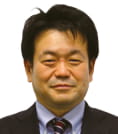
Professor
Graduate School of Frontier Sciences
The University of Tokyo
Collaborator
| Tatsu Kuwatani | Group Leader Research Institute for Marine Geodynamics Japan Agency for Marine-Earth Science and Technology |
| Hiromichi Nagao | Associate Professor Earthquake Research Institute The University of Tokyo |
| Norio Narita | Professor Graduate School of Arts and Science The University of Tokyo |
| Hideitsu Hino | Professor The Institute of Statistical Mathematics Research Organization of Information and Systems |
Outline
The mission of our team is to establish the framework of Bayesian measurement that implements Bayesian inference on measurement science. Bayesian measurement is capable of quantitatively evaluating limitations of measurements or integrating heterogeneous data acquired by different types of measurements. We will ultimately construct the foundation of mathematical information science, which enables us to uncover signals buried in noises due to low signal-to-noise ratio, to extract physical quantities that are directly unobservable, to efficiently utilize machine time of big research facilities, and to greatly impact on cutting-edge measurement technologies at the world’s best standards.
Shoji Takada
Development of Biomolecular 4-dimensional Structure Analysis Methods by Data Assimilation of High-speed Atomic Force Microscopy Single Molecule Measurements
Research Director
Shoji Takada
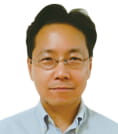
Professor
Graduate School of Science
Kyoto University
Collaborator
| Noriyuki Kodera | Professor Nano Life Science Institute Kanazawa University |
| Hidehito Tochio | Professor Graduate School of Science Kyoto University |
| Sotaro Fuchigami | Assistant Professor School of Pharmaceutical Sciences University of Shizuoka |
| Yasuhiro Matsunaga | Associate Professor Information Technology Center Saitama University |
Outline
High-speed atomic force microscopy (HS-AFM) was developed in Japan and is the only technology which can measure structural-dynamics (4-dimensional structure) of single protein and DNA molecules. To obtain high-resolution information from medium-resolution HS-AFM measurements, it is crucial to integrate it with information technology. This study develops new generation biomolecular 4-dimensional structure analysis methods by data assimilation from HS-AFM measurements and contributes to basic biology towards drug discovery.
Naoshi Hirata
Intelligent seismic data processing based on integration of next-generation seismic observations and the forefront of Bayesian statistics
Research Director
Naoshi Hirata
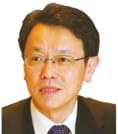
Project Researcher
Earthquake Research Institute
The University of Tokyo
Collaborator
| Fumiyasu Komaki | Professor Graduate School of Information Science and Technology The University of Tokyo |
| Taku Nonomura | Associate Professor Graduate School of Engineering Tohoku University |
Outline
In our country, more than 1,000 seismic stations have been continuously acquiring high-resolution digital seismic data. A large amount of instrumentally measured vibration data, which can be so-called big-data, will be available in near future. The data consist of both the conventional high quality seismic data by well-calibrated seismometers and many kinds of new vibration data measured by accelerometers based on Micro Electro Mechanical Systems (MEMS), which are installed in such as infrastructures, lifelines and smartphones. The aim of this project is to develop, collaborating with the forefront of Bayesian statistics, a set of algorithms that enable us to comprehensively analyze the seismic data obtained by sensors of various types, which eventually contributes to prevention/mitigation of seismic disasters and clarification of earthquake phenomena.
Yasuhiro Mukaigawa
Joint Design of Encoding and Decoding for Plenoptic imaging
Research Director
Yasuhiro Mukaigawa
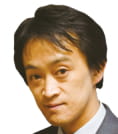
Professor
Graduate School of Advanced Science and Technology
Nara Institute of Science and Technology
Collaborator
| Hiroyuki Kubo | Associate Professor Graduate School of Science and Engineering Chiba University |
| Kenichiro Tanaka | Associate Professor College of Information Science and Engineering Ritsumeikan University |
| Yasuyuki Matsushita | Professor Graduate School of Information Science and Technology Osaka University |
Outline
Light rays in a scene convey high-dimensional visual information, which is a function of position, direction, wavelength, and time. A conventional camera can only record a slice of the high-dimensional visual information while discarding the vast majority of the rest, in which rich information about the scene is present. In this project, we develop new computational imaging techniques that enable us to record high-dimensional visual information. Our approach is based on jointly designing the encoding and decoding architectures based on new optical and electronic sensor design and advanced sparse representation theory and algorithms.
Wataru Yashiro
Development of Millisecond X-ray Tomography with Super Compressed Sensing
Research Director
Wataru Yashiro
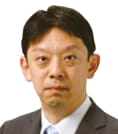
Professor
International Center for Synchrotron Radiation Innovation Smart
Tohoku University
Collaborator
| Tadashi Abukawa | Professor International Center for Synchrotron Radiation Innovation Smart Tohoku University |
| Hiroki Ogawa | Associate Professor Institute for Chemical Research Kyoto University |
| Hotaka Takizawa | Professor Faculty of Engineering, Information and Systems University of Tsukuba |
Outline
The purpose of our research is to develop “super compressed sensing”, which will make it possible to realize tomographic reconstruction from a small number of incomplete projection images, and realize millisecond-temporal-resolution four-dimensional X-ray tomography with a spatial resolution of 10 μm. We will realize the four-dimensional X-ray tomography using an X-ray grating interferometry and a synchrotron radiation beam, and apply it to unveiling the mechanisms of unrepeatable non-equilibrium phenomena observed in various fields of material and life sciences, leading to developing their frontiers and fostering innovations in industries.













